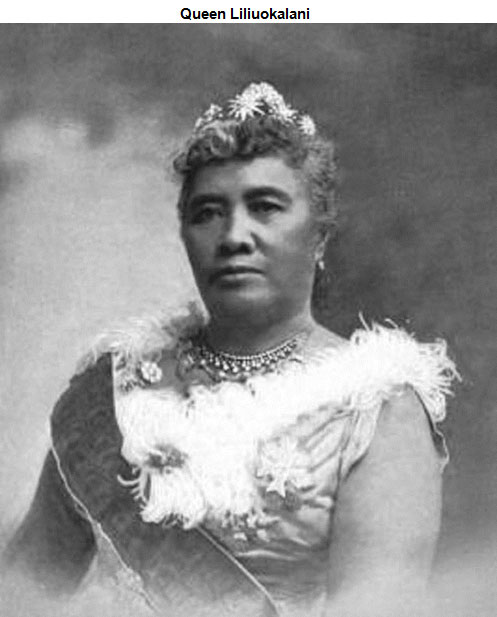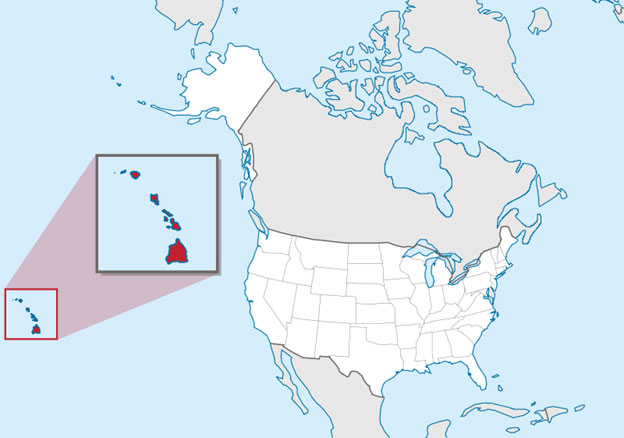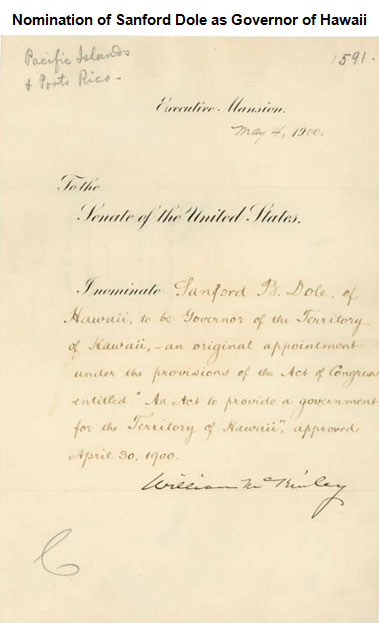
Source: Liliu08, Prince of Washington, Wikipedia

Source: Liliu08, Prince of Washington, Wikipedia
Queen Liliuokalani, pictured above, was the last monarch of Hawaii when her administration was overthrown in 1893 by a small group of American businessmen and soldiers. The overthrow would eventually lead to the annexation of Hawaii to the United States.

Source: Hawaii in the United States, TUBBS, Wikipedia
The six-island country of Hawaii had been of interest to the United States government since the early 1800s. Located 2,500 miles west of the Central Pacific Ocean, Hawaii was an attractive property to U.S. leaders. They feared that it may succumb to the expansionist visions of European nations.
Click here to see a photo gallery of the sights of Hawaii.
By the 1830s, Hawaii had been forced into economic treaties with both, France and Great Britain. In 1842, U.S. Secretary of State Daniel Webster alerted Hawaiian representatives in Washington D.C. of the United States’ interest in the country. In a letter, Webster also opposed annexation of Hawaii by any other nation. Sanford Dole, a pineapple business owner and lawyer, also forbade Great Britain, and France from continuing to colonize the nation of Hawaii.
By the mid-1840s, the United States and Hawaii had developed a friendly agreement with one another. Lured by the tropical climate and the availability of fertile soil, many Americans owned sugar plantations and various farms in Hawaii.
As these business owners’ profits soared, so did their economic dominance in Hawaii. By the 1870s, the business owners also dominated the political activities of Hawaii. To keep control of her country, Queen Liliuokalani attempted to strengthen her reign on the Hawaiian Islands. She was met with opposition from American businessmen who, under the leadership of Sanford Dole, overthrew her government in 1893.
Dole and U.S. soldiers and marines (with the support of President Benjamin Harrison) surrounded the royal palace and removed the queen. The planters cited the fear of high tariff on sugar for their actions. Immediately, Dole sought annexation, but the administration of Grover Cleveland opposed the idea and even tried to restore power back to the queen. Instead, Dole declared Hawaii an independent republic and it became a territory of the United States in 1900 with Sanford Dole becoming its first governor.

Source: President William McKinley's nomination of Sanford B. Dole to be Governor of the Territory of Hawaii, May 4, 1900, National Archives
The annexation of Hawaii would not be an easy task for the Americans who wanted to annex Hawaii. There was opposition from President Grover Cleveland and his administration, but there was also opposition from native Hawaiians. There were two native Hawaiian groups that petitioned against annexation and were eventually successful at stopping the process.
The petitions below are from the native Hawaiian groups who opposed annexation. The groups were divided by gender. Click on the petitions to learn more.

The issue of the annexation of Hawaii resurfaced when the United States became involved in the Spanish-American War, part of which was fought in the Pacific Ocean. It was during this time that the value of Hawaii shifted, and it was seen as an important naval base, as well as a critical fuelling station for the navy. Hawaii became a strategic military station for the U.S. Navy during the war with the Philippines.
Once again, pro-annexation groups moved to annex Hawaii. This time they were able to secure the necessary support in the U.S. Congress. Hawaii was officially annexed as a U.S. Territory on July 7, 1898. Hawaii was not admitted for statehood until 1959 when it became the 50th state of the United States.